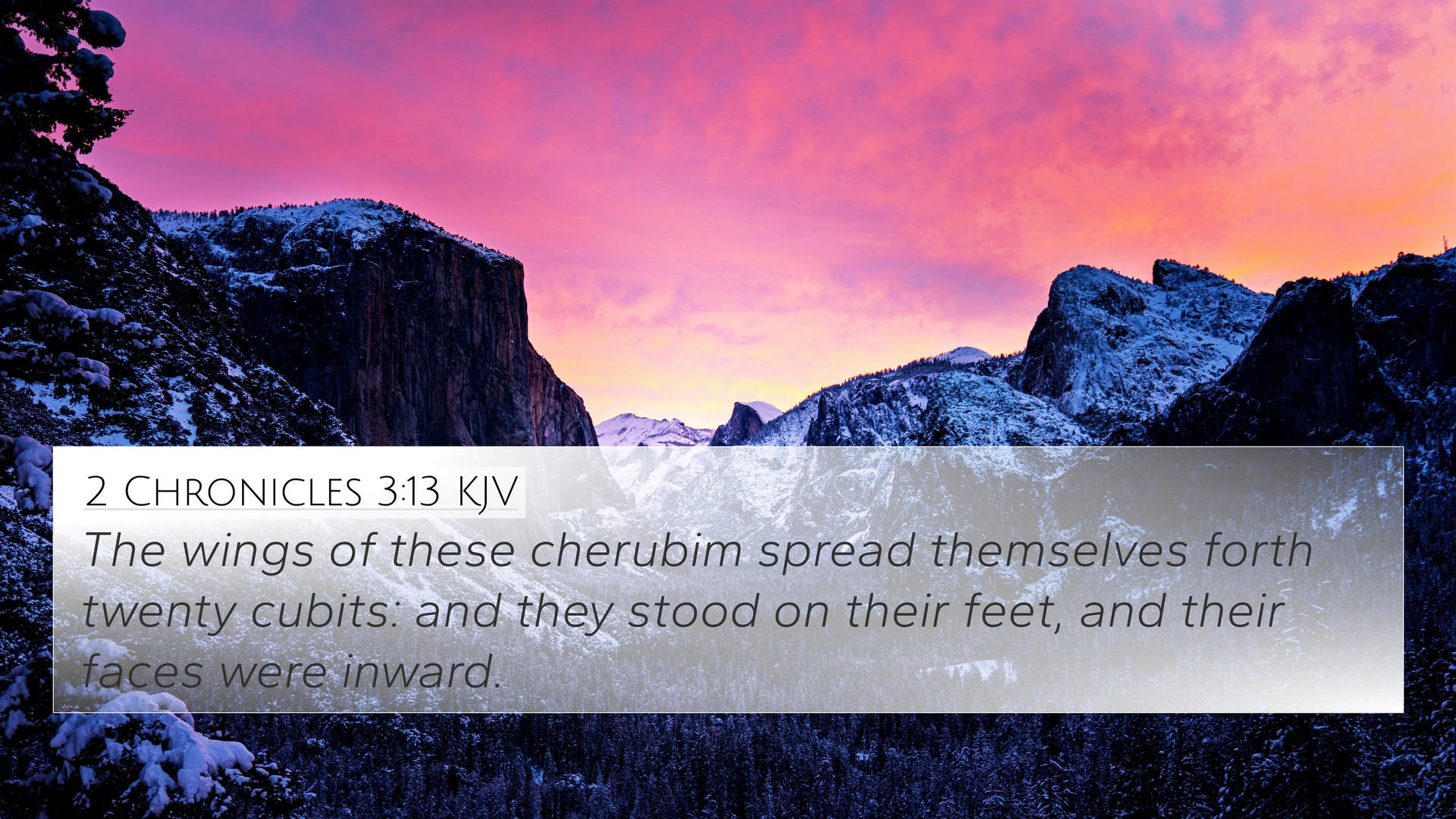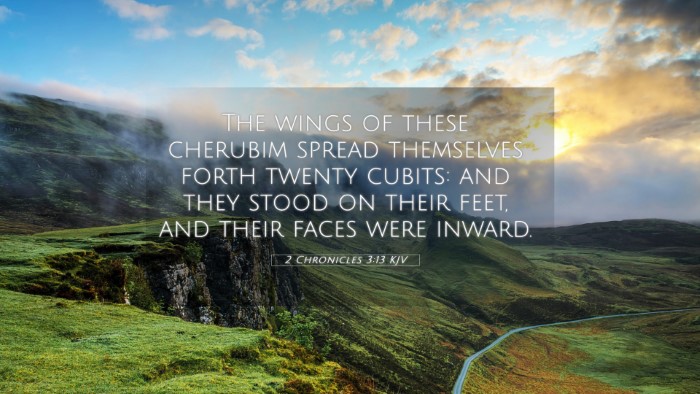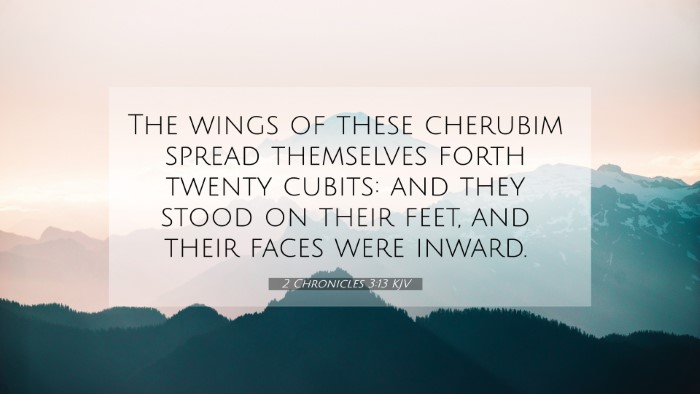Understanding 2 Chronicles 3:13
Verse: "The wings of these cherubim extended twenty cubits; they stood on their feet, and their faces were inward." (2 Chronicles 3:13)
Summary of the Verse's Meaning
This verse describes a significant architectural feature within the Temple of Solomon—the cherubim, which symbolize the divine presence of God. Their expansive wings and the placement of their faces indicate a protective and reverent posture towards the holy of holies, where the Ark of the Covenant resided.
Theological Significance
- Symbolism of Cherubim: The cherubim represent God's holiness and majesty, standing as guardians of the sacred space.
- Divine Presence: Their depiction underscores the belief that God was intimately present with His people in the Temple.
- Architectural Importance: The measurement of the wings signifies greatness and the importance of the Temple as a place of worship.
Commentary Insights
Insights from noted commentators enhance our understanding of this verse:
- Matthew Henry: He emphasizes the significance of the cherubim’s position in the temple, stating that they reflect God’s protection and the reverence owed to Him. Their massive wings demonstrate the glory that surrounds His presence.
- Albert Barnes: Barnes highlights the physical dimensions of the cherubim, relating them to the grandeur of the divine. He notes that their design served as a constant reminder of God's sovereignty and the sacredness of the worship space.
- Adam Clarke: Clarke delves into the cultural context, explaining that cherubim were common symbols of divine guardianship in ancient Near Eastern imagery. This establishes a connection with surrounding cultures while maintaining a distinct Israelite view of God's holiness.
Connections to Other Bible Verses
To fully grasp the meaning of 2 Chronicles 3:13, it is essential to consider its relation to other Scripture. Here are notable cross-references:
- Exodus 25:18-20: The initial instruction for making cherubim for the mercy seat.
- 1 Kings 6:27: A parallel account of the cherubim in the Temple, expanding on their dimensions and orientation.
- Psalms 99:1: The Lord reigns; let the people tremble; He sits enthroned between the cherubim.
- Ezekiel 10:1-22: A vision of cherubim that includes descriptions of their appearance and roles within God's presence.
- Revelation 4:6-8: The heavenly vision includes beings resembling seraphim, indicative of God's incomprehensible majesty.
- Hebrews 9:5: Mentions the cherubim of glory overshadowing the mercy seat, linking it with the New Testament understanding of atonement.
- Isaiah 6:2: Describes seraphim, heavenly beings similar in function, serving around the throne of God.
Thematic Connections
The themes evident in 2 Chronicles 3:13 intertwine with the following concepts:
- The Presence of God: The cherubim serve as reminders of God's transcendent holiness and His imminent presence among His people.
- Worship and Reverence: Understanding how worship built surroundings (the Temple) was intended to cultivate a deep reverence towards God.
- Gardians of Sacred Space: The role of cherubim as protectors of what is holy can be seen throughout scripture, underscoring an ongoing theological narrative.
Tools for Understanding Bible Verses
To further enhance your study, consider using these resources:
- Bible concordance for detailed studies on specific terms and themes.
- Bible cross-reference guide to identify links between connected verses.
- Cross-reference Bible study methods to analyze themes across different biblical texts.
- Comprehensive Bible cross-reference materials for deeper insights during study or sermon preparation.
Conclusion
2 Chronicles 3:13 illustrates the magnificent presence of God through the symbolism of cherubim in the Temple. Through the studies of various commentaries and cross-references, we are invited into a deeper understanding of God's holiness, the significance of worship, and the connections that span both the Old and New Testaments. Each verse provides an inter-Biblical dialogue, enriching our comprehension of scripture.



